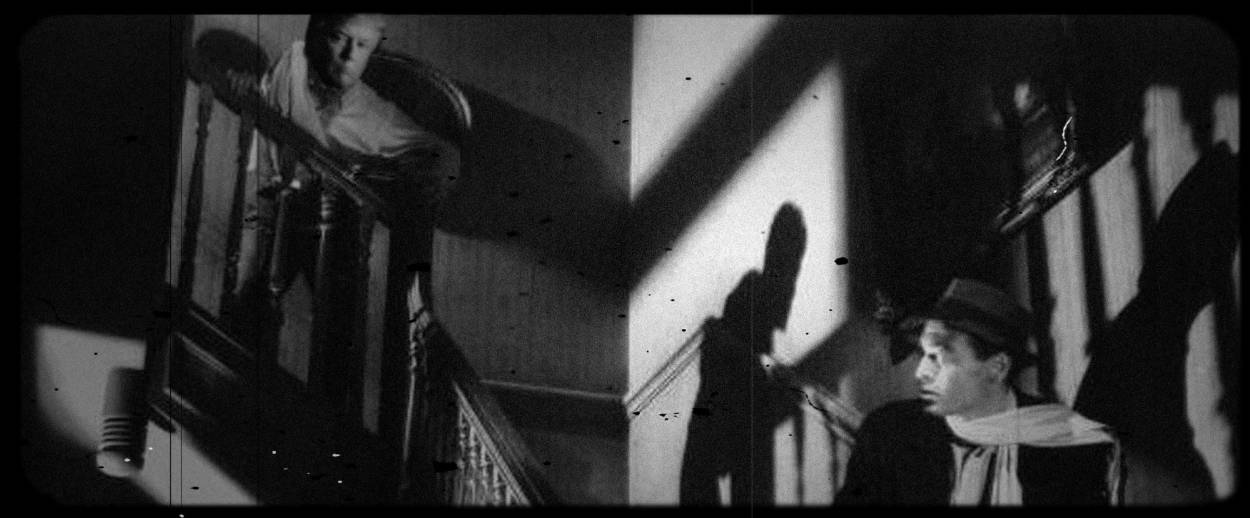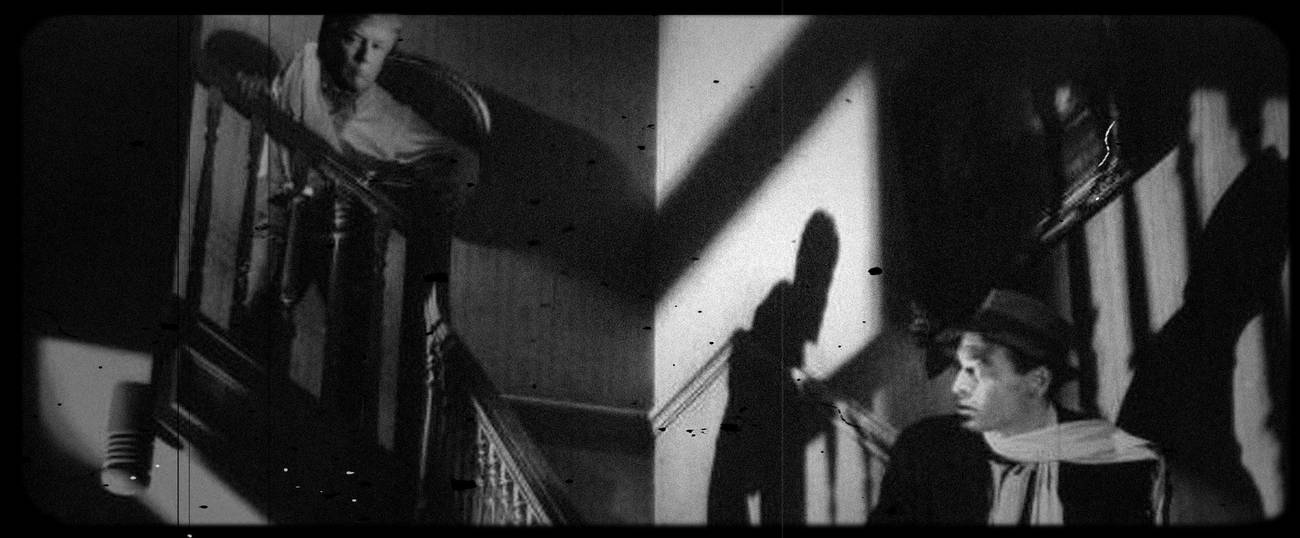It may be an exaggeration to credit a group of Jewish refugees with inventing the Hollywood tendency known as film noir—but not by much.
The key noir creators—directors Robert Siodmak, Edgar G. Ulmer, Otto Preminger, John Brahm, Billy Wilder, director-cinematographer Rudolph Maté, producer Seymour Nebenzal, actor Peter Lorre—were all Central European Jews who sought refuge in America. (One minor figure, Alfred Zeisler, was the reverse, an American-born Jew who began his career in the German film industry, then, driven out by the Nazis, made his way back to Hollywood to direct a B-movie update of Crime and Punishment appropriately titled Fear.)
Fritz Lang, the leading German director of the silent period and the godfather of film noir, may have been the most psychologically complex of these exiles. Originally from Vienna, Lang was the son of a converted Jewish mother and, almost until the moment he left Hitler’s Germany, wed to the Nazi Thea von Harbou, for whom he left his first Jewish wife. (Once in America, Lang was a prominent member of the Hollywood Anti-Nazi League—and consequently a person of interest for the FBI.)
Before noir, American movies were known for their optimism. The noir-ists infused American crime thrillers with a mixture of expressionist brio and existential dread. They knew, as their contemporary Hannah Arendt wrote in her article “We Refugees,” published in The Menorah Journal in January 1943, “Hell is no longer a religious belief or a fantasy, but something as real as houses and stones and trees.”
Whether suffering a degree of survivor guilt, knowing what had befallen their families and co-religionists trapped in Europe, transposing the terror they associated with Europe to the “innocent” American scene, or simply reflecting the terminal uncertainty of exile life, noir filmmakers made movies steeped in overt violence and hidden dangers, as well as the constant possibility of betrayal.
The noir mood of prevailing darkness, angst, and paranoia seems appropriate for an alternate universe in which Donald J. Trump is the capo di tutti capi (married to a femme fatale), Steve Bannon is chief of police, Mike Pence is head of the chamber of commerce, and Kellyanne Conway is the yenta next door. Herewith a selection of 10 key examples.
Stranger on the Third Floor (Boris Ingster, 1940). A bland but ambitious newshound stumbles across a murder, testifies against a hapless ex-con, and finds himself accused of a subsequent killing. This grim little art film (made at RKO, the studio that would soon produce Citizen Kane) was released a year after war broke out in Europe and is often credited as Hollywood’s first film noir. America appears as a quasi-totalitarian regime with a sham legal system, a cynical media, and an excess of xenophobia. Boris Ingster, a Latvian Jew recently arrived in Hollywood, directed from a script by the Hungarian Jewish writer Frank Partos that was possibly reworked by the American Jewish novelist Nathanael West. Peter Lorre plays a version of the deranged serial killer that made him an international star in Fritz Lang’s M.
Phantom Lady (Robert Siodmak, 1944). A spunky secretary takes it upon herself to save her boss, framed for the murder of his wife. The director Robert Siodmak began his career in the German film industry—and his movie’s shadowy soundstage Manhattan resembles the demonic Berlin of a Weimar silent film. Bracketed with Hitchcock and Fritz Lang during the 1940s, Siodmak is best remembered for his classic noirs—The Killers and Criss Cross—but he worked anti-Nazi tropes into even non-noir films like Return of Dracula and Cobra Woman. Here, the killer is a megalomaniacal artist with who associates himself with the great criminals of history.
Double Indemnity (Billy Wilder, 1944). The story of a sordid scam, in which a brash insurance agent (Fred MacMurray) is seduced by a dazzlingly duplicitous dame (Barbara Stanwyck) into a conspiracy to knock off her husband and collect the money, Double Indemnity is all the more impressive for making use of the bright Southern California sun. Born in Poland, Billy Wilder had worked with Siodmak in Weimar Berlin and was, if anything, even more cynical. I once read that Double Indemnity was Richard Nixon’s favorite film (he does have a resemblance to MacMurray) although I’ve never been able to confirm that; I do know that Wilder’s other great SoCal noir, Sunset Boulevard, about a delusional silent film queen, has the Trump seal of approval.
Scarlet Street (Fritz Lang, 1945). After three consecutive anti-fascist thrillers—Man Hunt, Ministry of Fear and Hangmen Also Die!—Lang turned his attention to the home front. Remaking Jean Renoir’s La chienne, Lang applies a bevy of noir touches to accentuate a cruel tale of rampant masochism. Edward G. Robinson’s gullible bank teller (described in Vincent Brook’s study of Jewish émigré noir-ists, Driven to Darkness, as a “self-persecuting” anti-hero) finds himself ensnared by a heartless hooker (Joan Bennett) and her sleazy pimp (Dan Duryea). Renoir’s frank treatment of the sexual triangle had to be veiled for American sensibilities; still, the movie was initially refused a license in New York state and elsewhere.
Detour (Edgar G. Ulmer, 1945). A stylish and stylized Poverty Row quickie, Edgar G. Ulmer’s masterpiece is quintessential noir—with a fatalistic flashback structure and an outrageously overdetermined plot. Andrew Sarris called it “the most despairing and most claustrophobic of all B pictures.” Hitchhiking to California, Ulmer’s clinically depressed protagonist—perhaps the most unlucky schlemiel in the noir canon—accepts a horrendously unfortunate ride and then compounds his situation by picking up the worst possible traveling companion, a femme fatal who is not such much evil as insane. A child of the Austrian Empire, Ulmer arrived in Hollywood in the early 1930s but, having romanced a producer’s wife, found himself exiled to New York, where he directed four Yiddish talkies before making his way back to what really can’t be called the Big Time.
The Chase (Arthur Ripley, 1946). Like Stranger on the Third Floor, The Chase is a low-budget Hollywood art film with a number of wordless stretches effectively orchestrated by old school silent comedy director Arthur Ripley. A feverish miasma in which more than one character seems to suffer from amnesia and the narrative structure suggests a dream within a dream, it’s largely set inside the malaria-muddled mind of its weirdly normal protagonist (Robert Cummings). The movie opens somewhere in the neighborhood of Mar-a-Lago, then switches abruptly to Havana, where the real nightmare begins. Adapted from a novel by crime writer Cornell Woolrich, The Chase was the brain-child of Seymour Nebenzal—Robert Siodmak’s cousin and Fritz Lang’s German producer—who escaped Europe in 1939 to give Peter Lorre one of his best supporting roles, as a sinister sidekick to the movie’s resident criminal oligarch.
The Lady From Shanghai (Orson Welles, 1947-48). Welles may not have been Jewish, but at the time he directed The Lady from Shanghai he was feeling persecuted—a left-wing New Dealer, attacked in the trade press, and likely to be subpoenaed by the House Un-American Activities Committee—and went into a European exile before the movie was released. The Lady was his Hollywood kiss-off, starring his soon-to-be ex-wife Rita Hayworth as a particularly deadly femme fatal. Welles cast himself as her patsy along with her wealthy, self-loathing husband (Everett Sloan, who played Bernstein in Citizen Kane). The movie was meant to dramatize an expressionist nightmare—Welles screened The Cabinet of Dr. Caligari for his cast and crew as preparation. Nuclear dread is also apparent. In one sequence shot on location in the hills around Acapulco, a character muses on the inevitability of an atomic Armageddon.
Force of Evil (Abraham Polonsky, 1948). Arguably the most talented Hollywood’s blacklisted directors, Abraham Lincoln Polonsky was born in the U.S.A. and with Force of Evil wrote and directed the most blatantly political of films noir. John Garfield plays a slum kid who rises from the Lower East Side to become a smooth lawyer fronting for a gangster plutocracy. He cooks up a scheme for a gambling racket kingpin and, in the process, inadvertently sentences his older brother—the heymishe proprietor of a small ma-and-pa numbers bank—to death. Made a quarter century before The Godfather, the movie is completely unambiguous in identifying capitalism with crime. “Whaddaya mean gangsters? It’s business,” one enforcer whines.
Night and the City (Jules Dassin, 1950). Jules Dassin was another native-born American (although before going to Hollywood he did act in the Yiddish worker’s theater Artef). Dassin would have been blacklisted like Polonsky but he eluded the House Committee on Un-American Activities by leaving the U.S. to continue his career in Europe. Made in the U.K., Night and the City is generally regarded as his finest film—starring Richard Widmark as a doomed hustler who, trying to make it as a wrestling promoter, winds up a victim, hunted through the grotesque, expressionist labyrinth of nocturnal London.
D.O.A. (Rudolph Maté 1950). Narrated by a man who is in the process of becoming a corpse, D.O.A. is the most existential of films noir. Edmund O’Brien plays an ordinary schlub who has been poisoned with radium and spends the rest of the movie attempting to figure out why. As though dropping through a trapdoor, he finds himself in a world populated by liars, crooks, and ranting psychopaths. Anyone can have a gun. Names shift, reality disintegrates.
Rudolph Maté, born Rudolf Mayer in Krakow, and educated in Budapest, came to Hollywood in the mid-1930s after serving as Carl Dreyer’s cinematographer on The Passion of Joan of Arc and Vampyr. He would be a noir notable simply as the man who shot Gilda (and parts of The Lady from Shanghai), and thus created the myth of Rita Hayworth, even if it were not for this Kafkaesque cheapster in which the doomed anti-hero struggles to figure out the meaning of his death, crying in his final moments that “all I did was notarize a bill of sale!”
Or did he mean, all I did was cast a ballot?
Read more of J. Hoberman’s film criticism for Tablet magazine here.

